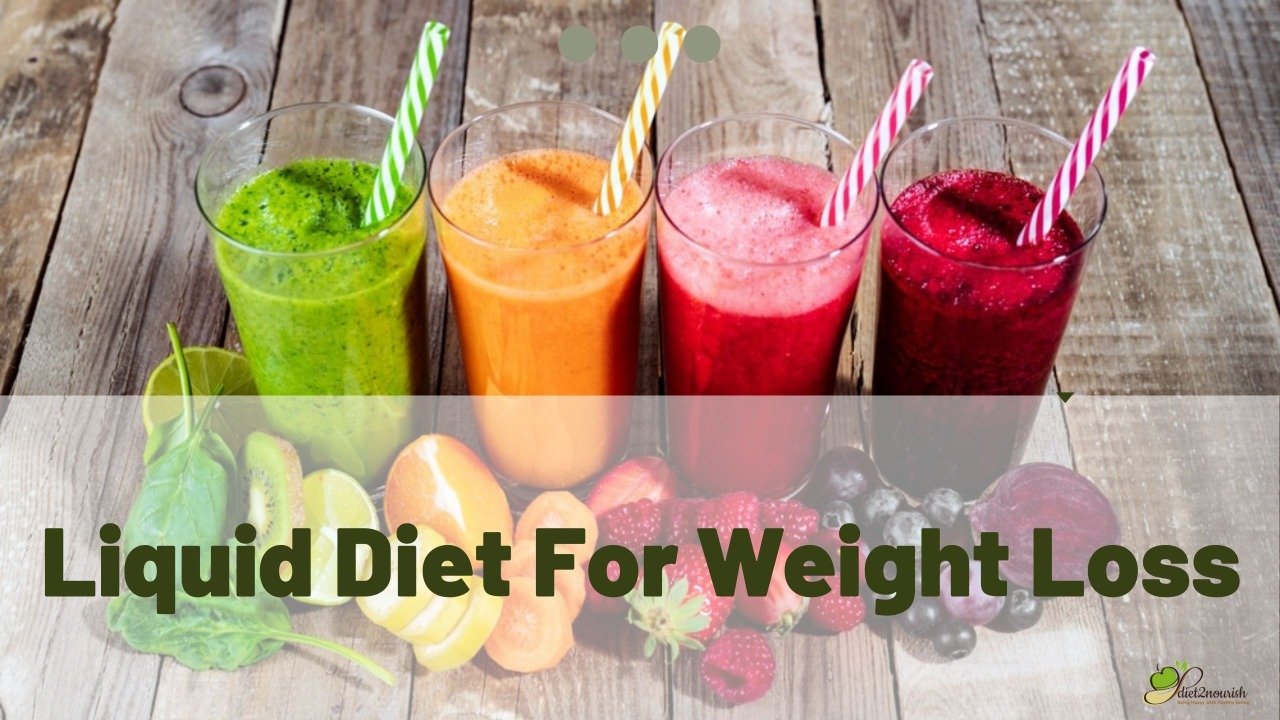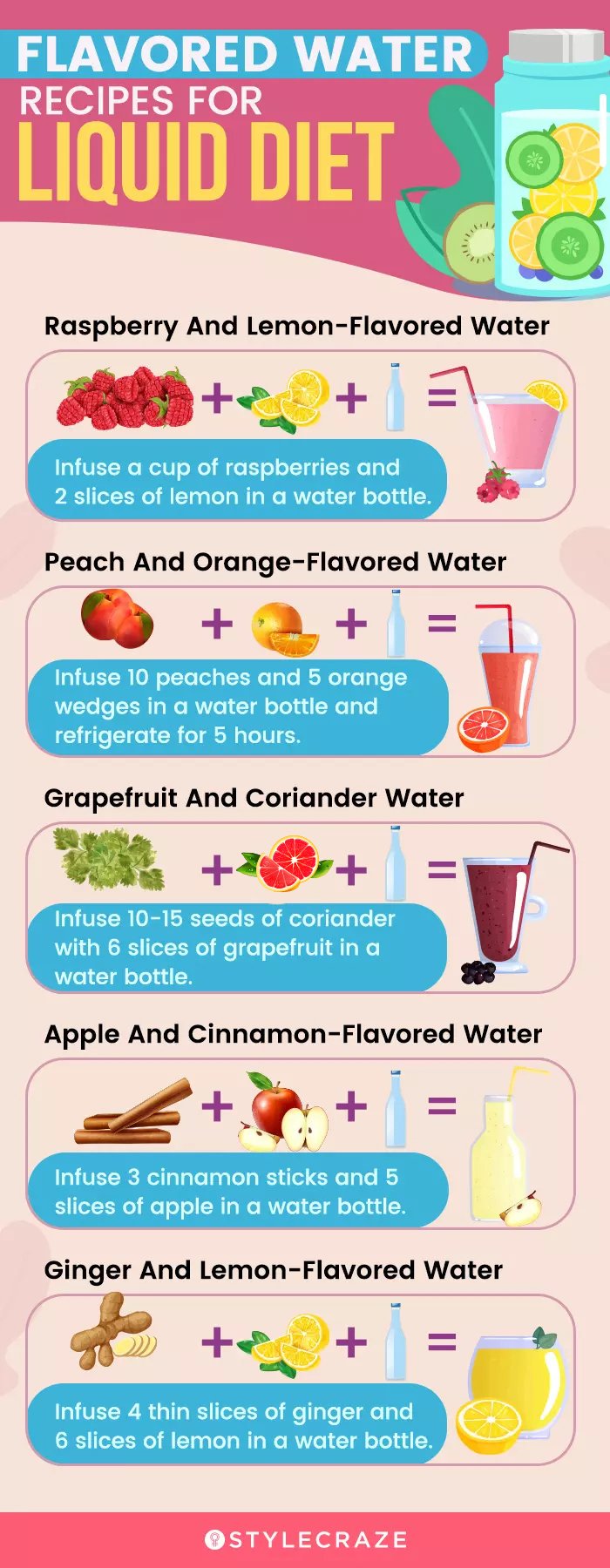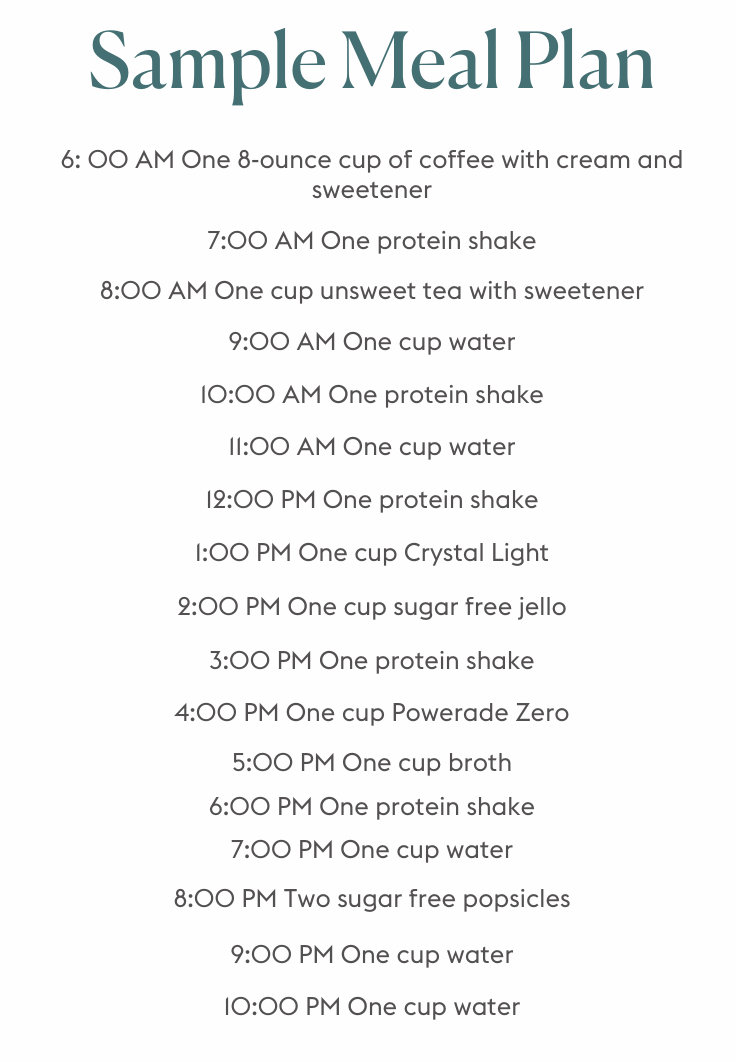Are you looking for an effective way to achieve weight loss results? Look no further than a 14-day liquid diet. By adhering to this diet plan, you can kickstart your weight loss journey and see visible results in just two weeks. By consuming a variety of nutritious liquids, you’ll not only shed unwanted pounds but also improve your overall health. So, if you’re ready to make a positive change, read on to discover how a 14-day liquid diet can help you achieve your weight loss goals.

This image is property of ramblersf.com.
Benefits of a 14-Day Liquid Diet
Rapid weight loss
One of the key benefits of a 14-day liquid diet is rapid weight loss. By consuming only liquids, you significantly reduce your calorie intake, which can lead to shedding pounds quickly. This can serve as a great motivation boost and provide visible results in a short period of time. However, it’s important to note that the weight loss during this diet may primarily consist of water weight and muscle mass, rather than fat. Therefore, it’s essential to transition back to a balanced diet after the 14 days to avoid regaining the lost weight.
Improved digestion
Another advantage of following a liquid diet for 14 days is improved digestion. Liquid foods are easier for your body to break down and absorb, giving your digestive system a break from the heavy task of processing solid foods. This can alleviate symptoms such as bloating, indigestion, and constipation. Additionally, some liquid options like vegetable juices can provide your body with essential nutrients and enzymes that promote a healthier digestive system.
Detoxification
A 14-day liquid diet can also act as a detox for your body. By eliminating solid foods and consuming nutrient-rich liquids, you give your digestive system a chance to rest and recover. This allows your body to eliminate toxins and waste more efficiently, leaving you feeling lighter and rejuvenated. Additionally, certain liquids like fruit smoothies can help flush out toxins from your body due to their high water and fiber content. Detoxifying your body can have various benefits, including improving your skin complexion, boosting your energy levels, and enhancing your overall well-being.
Reduced inflammation
Inflammation in the body can lead to various health issues, including obesity, diabetes, and heart disease. Following a 14-day liquid diet can help reduce inflammation by eliminating certain foods that commonly trigger inflammation, such as processed foods and sugar. Liquid foods like vegetable juices and fruit smoothies are rich in antioxidants and anti-inflammatory compounds, which can help reduce inflammation levels in your body. By reducing inflammation, you may experience improved joint health, reduced pain, and a lower risk of chronic diseases.
Preparation for a 14-Day Liquid Diet
Consultation with a healthcare professional
Before starting a 14-day liquid diet or any other major dietary change, it’s crucial to consult with a healthcare professional. They can assess your individual health needs and determine if a liquid diet is safe and appropriate for you. They can provide guidance on how to properly execute the diet and ensure that you’re receiving adequate nutrients throughout the 14 days. Additionally, if you have any underlying health conditions or take medications, they can provide insight into any potential risks or adjustments that may be necessary.
Clearing your schedule
Embarking on a 14-day liquid diet requires dedication and focus. It’s important to clear your schedule as much as possible during this period to minimize stressors and distractions. Take the time to plan your meals, create a supportive environment, and prioritize self-care. By allowing yourself the space and time to fully commit to your liquid diet, you increase your chances of success and can fully experience the benefits.
Creating a meal plan
To ensure a smooth and successful 14-day liquid diet, it’s essential to create a well-thought-out meal plan. Consider your dietary preferences, nutritional needs, and the type of liquids you enjoy. Incorporate a variety of options, such as vegetable juices, fruit smoothies, and protein shakes, to ensure you’re getting a balanced intake of nutrients. Plan your meals in advance, considering your daily schedule and any potential challenges you may face. This will help you stay organized, consistent, and motivated throughout the duration of your liquid diet.
Stocking up on necessary supplies
Before starting your 14-day liquid diet, make sure you have all the necessary supplies on hand. Stock up on ingredients for your chosen liquid meals, such as fresh produce, protein powders, and herbal teas. Consider investing in a reliable blender or juicer if you don’t already have one, as these will be essential tools during your liquid diet. Having everything readily available will make your experience more convenient and allow you to fully immerse yourself in the diet without any setbacks.

This image is property of diet2nourish.com.
What to Include in Your Liquid Diet
Water
Water is the foundation of any liquid diet and should be consumed in abundance. It’s essential for staying hydrated, flushing out toxins, and maintaining overall bodily functions. Aim to drink at least eight glasses of water per day, and increase your intake if you exercise or live in a hot climate. If you find plain water boring, you can infuse it with fresh fruits or herbs to add flavor without adding extra calories.
Vegetable juices
Vegetable juices are a fantastic addition to your liquid diet as they provide an array of essential nutrients. They are rich in vitamins, minerals, and antioxidants, which support overall health and well-being. Incorporate a variety of vegetables like spinach, kale, cucumber, carrot, and beetroot into your juices for a diverse range of nutrients. You can also add herbs and spices like ginger or turmeric to enhance the flavor and boost their beneficial properties.
Fruit smoothies
Fruit smoothies are not only delicious but also a great way to obtain vitamins, fiber, and natural sugars. Opt for a variety of fruits like berries, bananas, mangoes, and oranges to ensure you’re getting a spectrum of nutrients. You can blend your smoothies with water, plant-based milk, or yogurt for added creaminess. To increase the protein content, consider adding a scoop of protein powder or a spoonful of nut butter.
Protein shakes
Protein shakes are an important component of a liquid diet, especially if you’re incorporating exercise into your routine. They provide essential amino acids that support muscle growth, repair, and recovery. Choose a high-quality protein powder that aligns with your dietary preferences, whether it’s whey, plant-based, or collagen. You can mix your protein powder with water, milk, or fruit juice for a tasty and fulfilling protein shake.
What to Avoid on a 14-Day Liquid Diet
Solid foods
During your 14-day liquid diet, it’s crucial to avoid solid foods altogether. The purpose of a liquid diet is to give your digestive system a break from processing solid foods and rely solely on easily digestible liquids. Consuming solid foods defeats the purpose of the diet and may hinder your progress. Be disciplined and committed to sticking to the prescribed liquid-only approach for the full duration of the diet.
Dairy products
Dairy products, such as milk, cheese, and yogurt, should be avoided during your liquid diet. Many people have difficulty digesting lactose, a sugar found in dairy, and this can lead to bloating, gas, and discomfort. Additionally, dairy products are often high in calories and fat, which contradicts the low-calorie nature of a liquid diet. Opt for plant-based alternatives instead, such as almond milk, coconut yogurt, or soy cheese.
High-sugar beverages
High-sugar beverages like sodas, fruit juices with added sugars, and energy drinks should be eliminated during your liquid diet. These beverages provide empty calories and can lead to blood sugar spikes and crashes, which can negatively impact your energy levels and overall health. Opt for natural, low-sugar alternatives, like infused water or herbal teas, to satisfy your thirst and support your weight loss goals.

This image is property of cdn2.stylecraze.com.
Tips for Staying Motivated and Committed
Set realistic goals
When embarking on a 14-day liquid diet, it’s important to set realistic goals that align with your personal needs and capabilities. Unrealistic expectations can lead to disappointment and frustration, making it difficult to stay committed. Consult a healthcare professional or a registered dietitian to determine a healthy and achievable weight loss goal for your specific situation. By having a realistic target in mind, you’ll feel more motivated and encouraged to stick to the liquid diet.
Find support
Staying motivated and committed to a 14-day liquid diet can be challenging, especially when facing cravings or temptations. Find a support system that can provide guidance, encouragement, and accountability during your journey. This can be a friend, family member, or even an online community dedicated to healthy lifestyles. By having someone or a group to lean on, share experiences, and exchange tips with, you’ll feel less alone and more motivated to achieve your weight loss results.
Track your progress
Monitoring your progress throughout the 14-day liquid diet can help you stay motivated and committed. Keep a daily journal where you record your liquid meals, water intake, exercise routine, and any observations or feelings you experience. Additionally, consider taking weekly measurements and photos to visually track your transformation. Celebrate small milestones along the way to boost your confidence and reinforce your dedication to the diet.
Reward yourself
Rewarding yourself for sticking to your 14-day liquid diet can be a powerful motivator. Set up a system of small rewards for each milestone you reach, whether it’s completing one week successfully, hitting a certain weight loss goal, or achieving a fitness achievement. Treat yourself to a relaxing massage, a new outfit, or a day at the spa. These rewards will not only make your liquid diet journey more enjoyable but also serve as a reminder of the progress you’re making and the importance of self-care.
Physical Activity During a 14-Day Liquid Diet
Low-intensity exercises
While following a 14-day liquid diet, it’s important to engage in physical activity, but you should prioritize low-intensity exercises. Activities such as walking, cycling, or swimming can help maintain your fitness levels without putting excessive strain on your body. Low-intensity exercises promote fat burning and support overall health and well-being. Aim for 30 minutes of low-intensity exercise most days of the week to complement your liquid diet and optimize weight loss results.
Yoga and stretching
Incorporating yoga and stretching into your daily routine during your 14-day liquid diet can provide numerous benefits. These activities not only help improve flexibility and balance but also promote relaxation and reduce stress. Choose gentle yoga practices that focus on breath control, meditation, and gentle stretches. This will help you stay centered, relieve any tension in your muscles, and support your overall well-being while on your liquid diet.
Light cardio workouts
If you feel capable and energized, you can include light cardio workouts in your physical activity routine. Activities like jogging, dancing, or using an elliptical machine can help increase your heart rate and burn calories. However, it’s important to listen to your body and ensure you’re not straining yourself. Pay attention to how you feel during and after the workout and adjust the intensity or duration as needed. Remember, the primary focus of your 14-day liquid diet is weight loss, and any physical activity should complement that goal.
This image is property of lh5.googleusercontent.com.
Handling Hunger and Cravings
Stay hydrated
When hunger or cravings strike during your 14-day liquid diet, staying hydrated can be a helpful technique to manage those feelings. Sometimes, the sensation of hunger is actually our body signaling that we’re dehydrated. Drink a glass of water or an herbal tea when you feel hungry to see if that satisfies your body’s needs. Additionally, staying hydrated can help suppress cravings for unhealthy foods and keep you feeling fuller for longer.
Drink herbal teas
Herbal teas can be a great addition to your liquid diet to help manage hunger and cravings. Certain teas, like peppermint or chamomile, have appetite-suppressing properties, which can help you resist the urge to snack on solid foods. In addition, herbal teas can provide relaxation, soothing effects, and various health benefits. Explore different flavors and find the ones that are most enjoyable to you. Sip on a warm cup of herbal tea when you’re craving something outside of your liquid meals.
Distract yourself
When hunger or cravings become overwhelming, distracting yourself can help redirect your focus and overcome those temptations. Engage in activities that keep your mind occupied, such as reading a book, watching a movie, practicing a hobby, or going for a walk. By shifting your attention away from food, you’ll be less likely to cave in to your cravings. Remember, it’s normal to experience hunger during a liquid diet, but with time, your body will adjust and adapt.
Incorporate fiber-rich liquids
Including fiber-rich liquids in your 14-day liquid diet can help keep you feeling fuller for longer and manage hunger and cravings. Fiber adds bulk to your liquid meals, giving your stomach a sense of fullness. Vegetable juices that retain pulp, thick fruit smoothies, or blended soups can be excellent sources of fiber during your liquid diet. Fiber also supports healthy digestion and prevents constipation, which can be common during a liquid diet. Opt for a variety of fruits and vegetables to ensure you’re getting a good balance of soluble and insoluble fiber.
Dealing with Potential Side Effects
Headaches and dizziness
Experiencing headaches and dizziness can be a common side effect when starting a 14-day liquid diet, especially during the initial days of transitioning from solid to liquid foods. These symptoms may be a result of low blood sugar levels, caffeine withdrawal, or the body adjusting to the new diet. To alleviate these side effects, ensure you’re consuming adequate calories and staying properly hydrated. If the symptoms persist or worsen, consult a healthcare professional.
Fatigue
Feeling fatigue during a 14-day liquid diet is not uncommon, especially if you’re significantly reducing your calorie intake. Your body may take some time to adapt to the limited energy source. To combat fatigue, ensure you’re consuming enough liquids and getting sufficient rest. Listen to your body’s needs and adjust your activity levels accordingly. It’s important to remember that fatigue can be temporary, and as your body adjusts, your energy levels should stabilize.
Nausea
Nausea can occur during a 14-day liquid diet, especially if you’re trying new ingredients or flavors. It’s important to gradually introduce new liquids into your diet and listen to your body’s reactions. If you experience nausea, identify the potential triggers and avoid those liquids or ingredients. Focus on consuming easily digestible and mild liquids, such as plain vegetable juices or fruit smoothies. If the nausea persists or is severe, it’s advisable to consult a healthcare professional.
Constipation
Constipation can be a side effect of a 14-day liquid diet since the lack of fiber from solid foods may reduce bowel movements. To prevent constipation, it’s essential to consume fiber-rich liquids, drink enough water, and maintain physical activity. Ensure your vegetable juices, fruit smoothies, and protein shakes contain plenty of fruits and vegetables that provide both soluble and insoluble fiber. If constipation becomes persistent or troublesome, consult with a healthcare professional for further guidance.

This image is property of samabariatrics.com.
Transitioning Back to Solid Foods
Gradual reintroduction of solid foods
After completing your 14-day liquid diet, it’s essential to transition back to solid foods gradually. Abruptly returning to regular eating habits can shock your digestive system and potentially undo the progress you’ve made during the liquid diet. Start by introducing small portions of easily digestible foods, such as steamed vegetables, lean proteins, and whole grains. Monitor how your body responds, and slowly increase the complexity and quantity of your solid meals over several days or weeks.
Choosing nutritious options
When reintroducing solid foods into your diet, it’s important to focus on nutritious options. Choose foods that provide essential vitamins, minerals, and macronutrients. Include a variety of fruits, vegetables, whole grains, lean proteins, and healthy fats. Avoid processed, high-sugar, and high-fat foods that can lead to weight gain and undermine the progress made during the 14-day liquid diet. Prioritize whole, real foods that nourish your body and support your long-term health goals.
Portion control
Portion control is crucial during the transition phase from a 14-day liquid diet to solid foods. Your stomach may have shrunk during the liquid diet, so it’s important to avoid overeating. Start with smaller portion sizes and pay attention to your body’s hunger and fullness cues. This will help you prevent unnecessary weight gain and allow your body to readjust to solid foods gradually. Remember, it’s not just about what you eat, but also how much you eat.
Long-Term Weight Maintenance
Establishing healthy eating habits
A 14-day liquid diet can jumpstart your weight loss journey, but to maintain long-term weight loss, it’s crucial to establish healthy eating habits. Focus on consuming a balanced diet that includes a variety of whole, nutrient-dense foods. Incorporate fruits, vegetables, lean proteins, whole grains, and healthy fats into your meals. Practice portion control, mindful eating, and be mindful of emotional eating triggers. Gradually reintroduce treats and indulgences in moderation, but keep your overall diet centered around nourishing your body.
Regular physical activity
Regular physical activity is key to long-term weight maintenance. Find activities you enjoy and make them a part of your daily routine. Aim for a combination of cardio exercises, strength training, and flexibility exercises to maintain muscle tone, burn calories, and support overall physical well-being. Engaging in regular physical activity not only helps you manage weight but also boosts your mood, increases energy levels, and promotes overall health.
Monitoring your progress
Monitoring your progress is essential for long-term weight maintenance. Continue to track your weight, measurements, and body composition regularly to identify any changes or trends. This will allow you to make adjustments to your diet or exercise routine as needed. Pay attention to how your body feels, your energy levels, and any changes in cravings or hunger signals. This self-awareness will help you maintain your progress and make sustainable choices in the long run.
Seeking professional guidance
Maintaining long-term weight loss can be challenging, and seeking professional guidance can be immensely helpful. Consider working with a registered dietitian or a healthcare professional who specializes in weight management. They can provide personalized guidance, create a sustainable eating plan, and help you navigate any challenges or plateaus you may encounter. Having a supportive professional on your side can greatly increase your chances of maintaining your weight loss and achieving your health goals.
In conclusion, a 14-day liquid diet can offer various benefits, including rapid weight loss, improved digestion, detoxification, and reduced inflammation. However, it’s important to prepare carefully and consult with a healthcare professional before starting this type of diet. During the 14 days, focus on consuming a variety of liquids such as water, vegetable juices, fruit smoothies, and protein shakes while avoiding solid foods, dairy products, and high-sugar beverages. To stay motivated and committed, set realistic goals, find support, track your progress, and reward yourself along the way. Incorporate low-intensity exercises, yoga, and stretching into your routine, and employ strategies like staying hydrated, drinking herbal teas, distracting yourself, and including fiber-rich liquids to handle hunger and cravings. Be aware of potential side effects like headaches, fatigue, nausea, and constipation, and take measures to address them if they arise. When transitioning back to solid foods, do so gradually, choosing nutritious options and practicing portion control. For long-term weight maintenance, establish healthy eating habits, engage in regular physical activity, monitor your progress, and consider seeking professional guidance. By following these guidelines and maintaining a balanced approach, you can achieve weight loss results with a 14-day liquid diet and set the foundation for a healthier lifestyle.